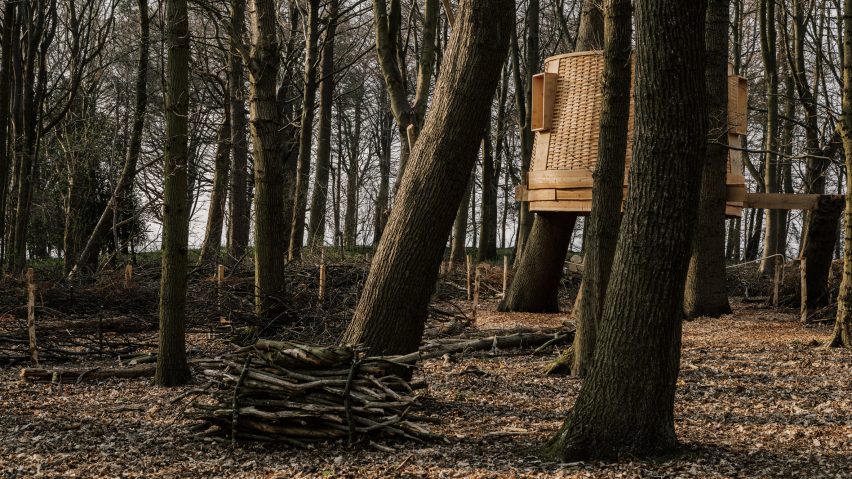
Sebastian Cox builds Sylvascope treehouse as symbol of effective woodland management
British designer Sebastian Cox has created a treehouse in the grounds of Harewood House in West Yorkshire, in a strategy to make a woodland grove more useful and biodiverse.
Sylvascope is Cox's contribution to the second Harewood Biennial, which asked contributors to demonstrate a "radical act" of craft.
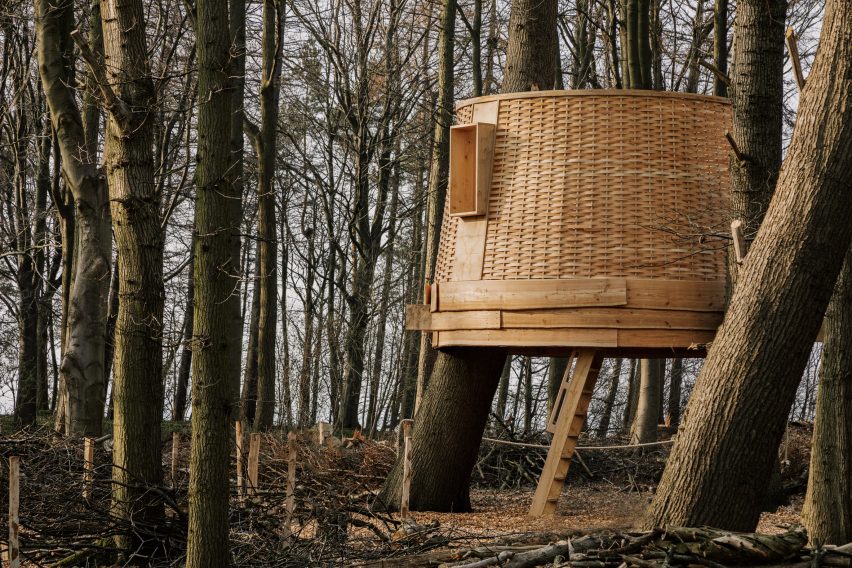
The Kent-based designer wanted to show how cutting down trees can make woodlands more healthy and also provide a sustainable source of material for designers and makers.
"My radical act is to fell trees," explained Cox during a tour. "We're trying to show the value in bringing woodlands into management."
"It's a conversation we really need to start having in the UK," he continued. "Why are we planting trees and what are we doing with them? We import 90 per cent of our wood, yet our woodlands are largely unmanaged."
Cox has developed a woodland management strategy for one particular patch of woodland at Harewood House, a country estate with more than 100 acres.
The Sylvascope treehouse sits at the heart of this grove, with windows that face out towards each of the three zones he identifies in his strategy. It is made almost entirely from wood harvested from the site.
"Our actual piece is the woodland management plan, but we've made a structure in a tree as a byproduct of that," said Cox.
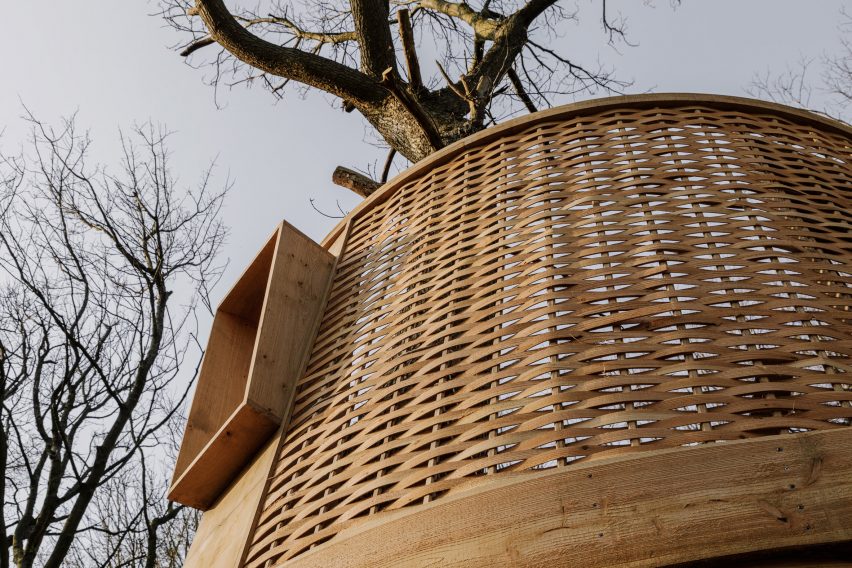
In one of the three sections, Cox is cultivating understory development by letting the hardwood trees coppice, while the softwood trees will be interplanted with small species like hazel and field maple.
The aim is to facilitate the growth of brambles and herbs, to create a more biodiverse environment for wildlife.
"We assume a healthy woodland has tall trees and no brambles or undergrowth," said Cox, "but this is not favourable to much woodland wildlife. When we fell trees and let light to the woodland floor, other plants, insects, mammals and birds can thrive."
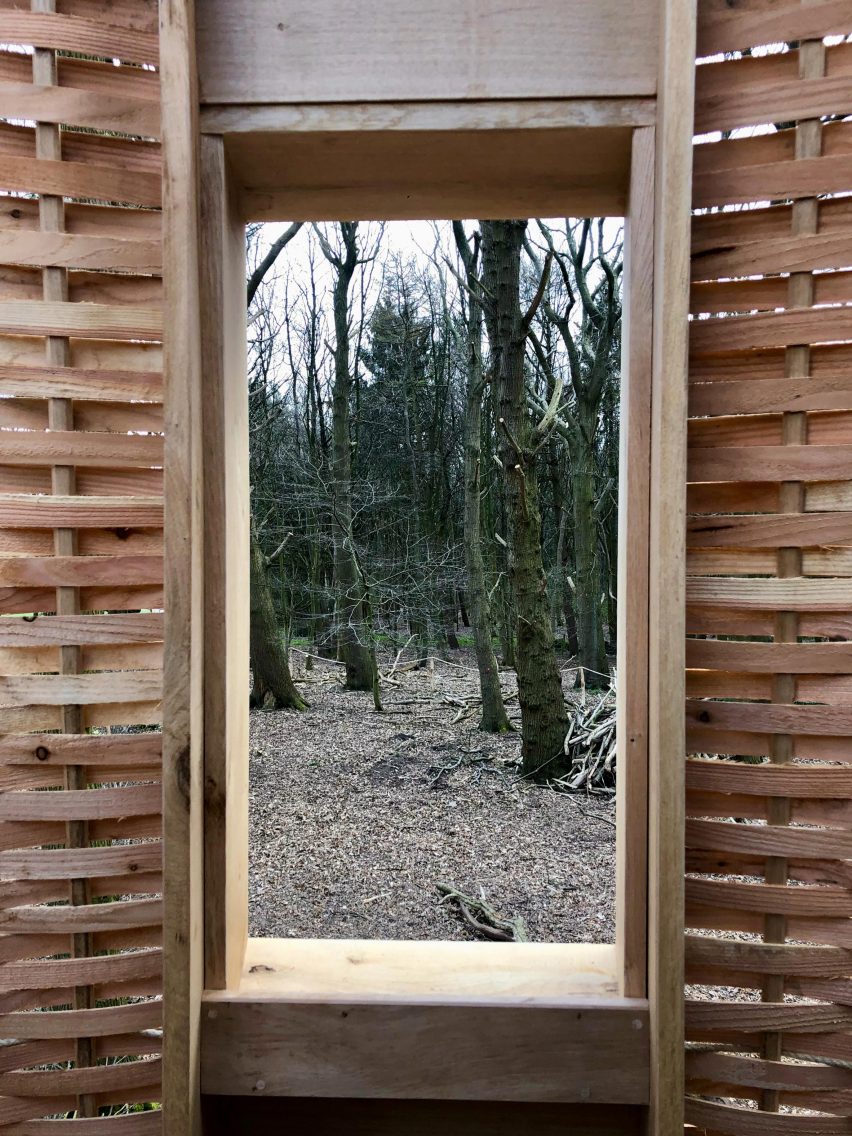
In a second section, Cox is planting more of the same tree species but has sourced seedlings from central France – where the temperature is slightly higher – to build up a resilience against climate change.
For the third section, sweet chestnut will be grown in short rotation coppice, to produce a higher yield of useful wood.
"We're going to see really radical change here quite quickly over the course of the seasons," said Cox. "The whole wood is going to be more biodiverse and more useful."
Cox teamed up with treehouse builders Root and Shoot – who he previously collaborated with on a project in Hertfordshire – to build the Sylvascope structure.
Combining Douglas fir and larch elements, the treehouse showcases a variety of woodwork techniques. Larch strips were woven to create the walls, while the curved strips surrounding the base have a rough bark edge.
The treehouse is fixed to existing trees using cantilevered beam supports, rather than posts that extend down to ground.
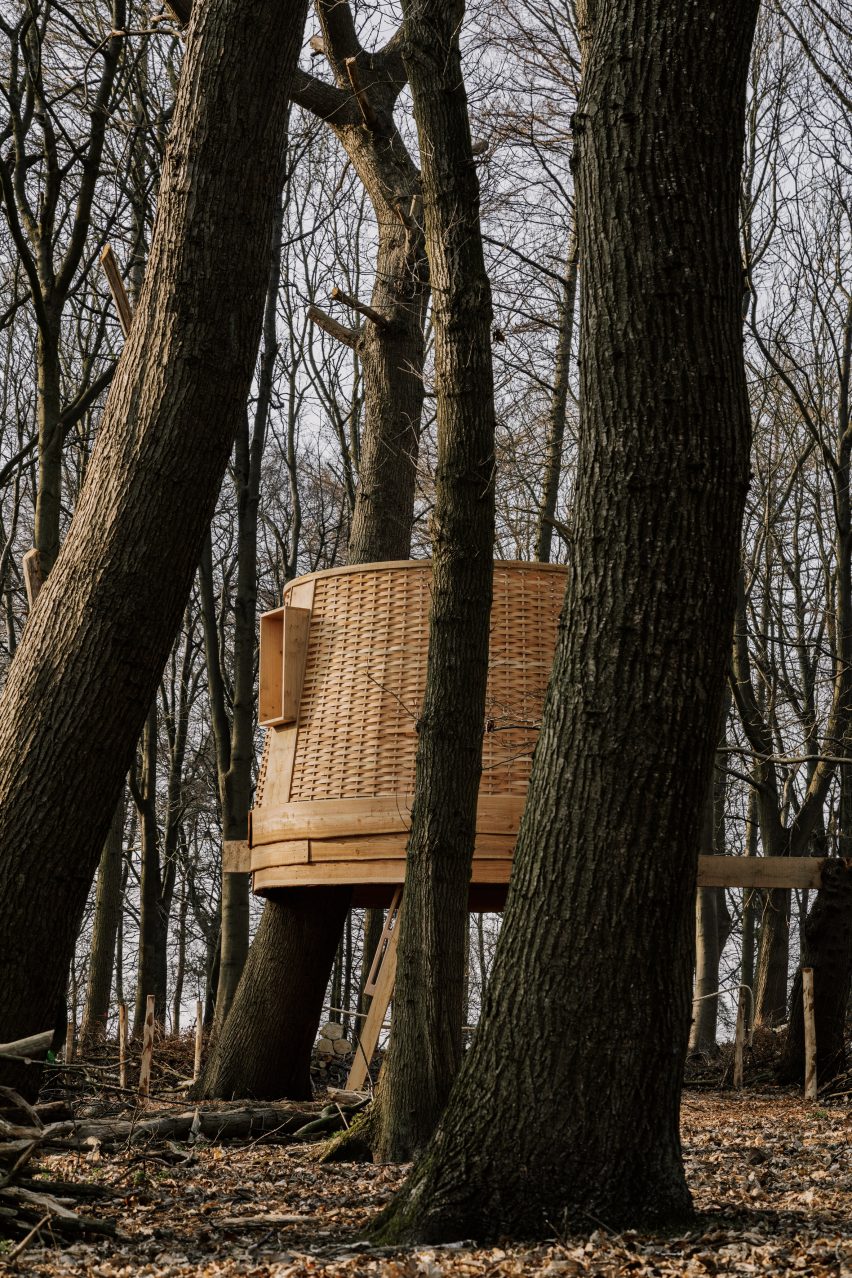
The rest of the wood harvested from the site is being sawn into planks, which could be sold or given away to other makers.
"A commercial forestry contractor or timber yard might not be interested in this quality of wood," said Cox.
"It's a little bit scruffy but there is still value in it," he said. "It you're clever, there's a lot you can do with it."
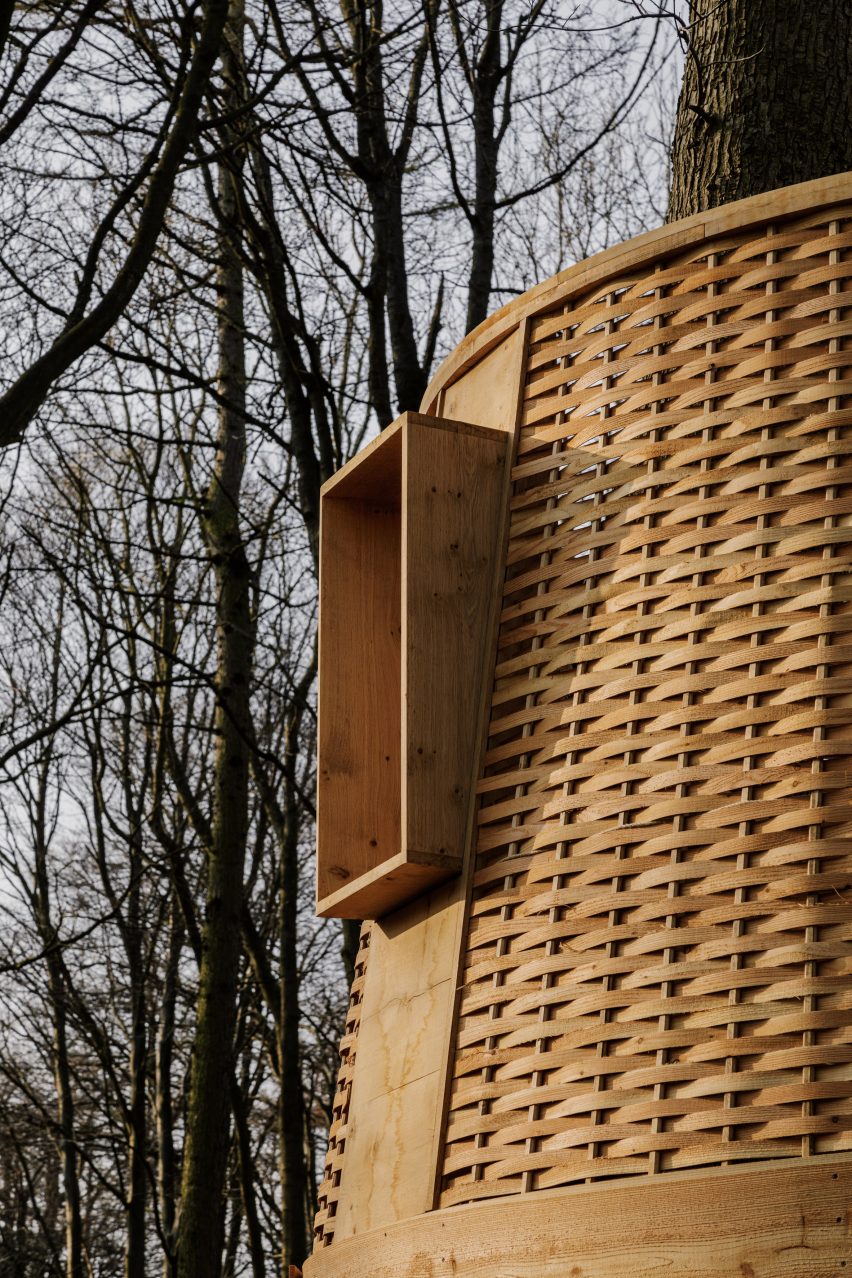
Sylvascope is one of 18 projects that feature in the Harewood Biennial 2022, Radical Acts, which is curated by Hugo Macdonald, but unlike the others it will become a permanent new addition to the estate.
It is the latest in a series of biodiversity-focused design projects by Cox, with other examples including furniture made from mushroom mycelium and a sculpture made using coppiced hazel.
He previously spoke about his design approach in a live interview during Dezeen's Virtual Design Festival.
The Harewood Biennial 2022 is on show from 26 March to 29 August at Harewood House in West Yorkshire. See Dezeen Events Guide for an up-to-date list of architecture and design events taking place around the world.
Photography is by Edvinas Bruzas unless otherwise indicated.